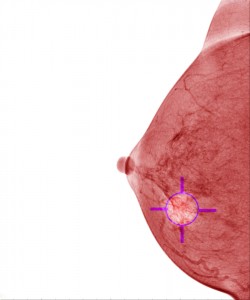 In a recent study published in Cancer, a research team evaluated treatment practice patterns before and after the publication of the Cancer and Leukemia Group B (CALGB) 9343 randomized phase 3 trial, which determined lumpectomy and adjuvant therapy with tamoxifen alone, instead of radiotherapy and tamoxifen, as an appropriate treatment for older women with clinical stage I, estrogen receptor (ER)-positive breast cancer.
In a recent study published in Cancer, a research team evaluated treatment practice patterns before and after the publication of the Cancer and Leukemia Group B (CALGB) 9343 randomized phase 3 trial, which determined lumpectomy and adjuvant therapy with tamoxifen alone, instead of radiotherapy and tamoxifen, as an appropriate treatment for older women with clinical stage I, estrogen receptor (ER)-positive breast cancer.
The research titled “The Use of Adjuvant Radiotherapy in Elderly Patients With Early-Stage Breast Cancer: Changes in Practice Patterns After Publication of Cancer and Leukemia Group B 9343”, analyzed the Surveillance, Epidemiology, and End Results (SEER) to evaluate practice patterns before and after the publication of this important study. A total of 40,583 women aged 70 years or older, treated with breast-conserving surgery for clinical stage I, ER-positive and/or progesterone receptor-positive breast cancer were identified.
The team further assessed the amount of patients who received radiation therapy (and what type of radiation) throughout time, as well as patient’s age, tumor size and grade and laterality.
The Cancer and Leukemia Group B (CALGB) 9343 study was a randomized controlled trial evaluating lumpectomy with tamoxifen compared with lumpectomy, wholebreast radiotherapy, and tamoxifen in women aged >70 years with early-stage, estrogen receptor (ER)-positive breast cancer. Results from the study established that lumpectomy and adjuvant tamoxifen alone was a reasonable option for therapy in this patient group.
However, despite these results, the omission of radiotherapy has not been widely adopted into clinical practice.
[adrotate group=”1″]
The authors showed that 68.6% of patients treated between 2000 and 2004 (before the CALGB trial was published) received adjuvant radiation therapy, compared with 61.7% of those treated between 2005 and 2009. Even though there was a reduced use of external beam radiotherapy, an increase in the use of implant radiotherapy was observed, from 1.4% to 6.2%, before and after the trial, respectively.
However, the authors write they found “significant reductions in the frequency of radiotherapy delivery over time across age groups, tumor size, and tumor grade and regardless of laterality”.
Furthermore, they conclude that “Randomized phase 3 data support the omission of adjuvant radiotherapy in elderly women with early-stage breast cancer. Analysis of practice patterns before and after the publication of these data indicates a significant decline in radiotherapy use; however, nearly two-thirds of women continue to receive adjuvant radiotherapy”.



I am a lymphedema patient advocate and have been fighting for women’s rights to determine whether adjuvent radiotherapy would be indicated for early breast cancer with 0-3 positive nodes, given the risk of breast, torso and upper extremity lymphedema following irradiation. It has always been my contention that the patient should be given the appropriate information with which to make an individual tradeoff between local control of recurrence and lymphedema. I am happy to see that this idea is gaining traction.
You may be interested in a poster I presented on the subject in 2008 on the subject. http://www.lymphactivist.org/breast_lymphedema-1.pdf